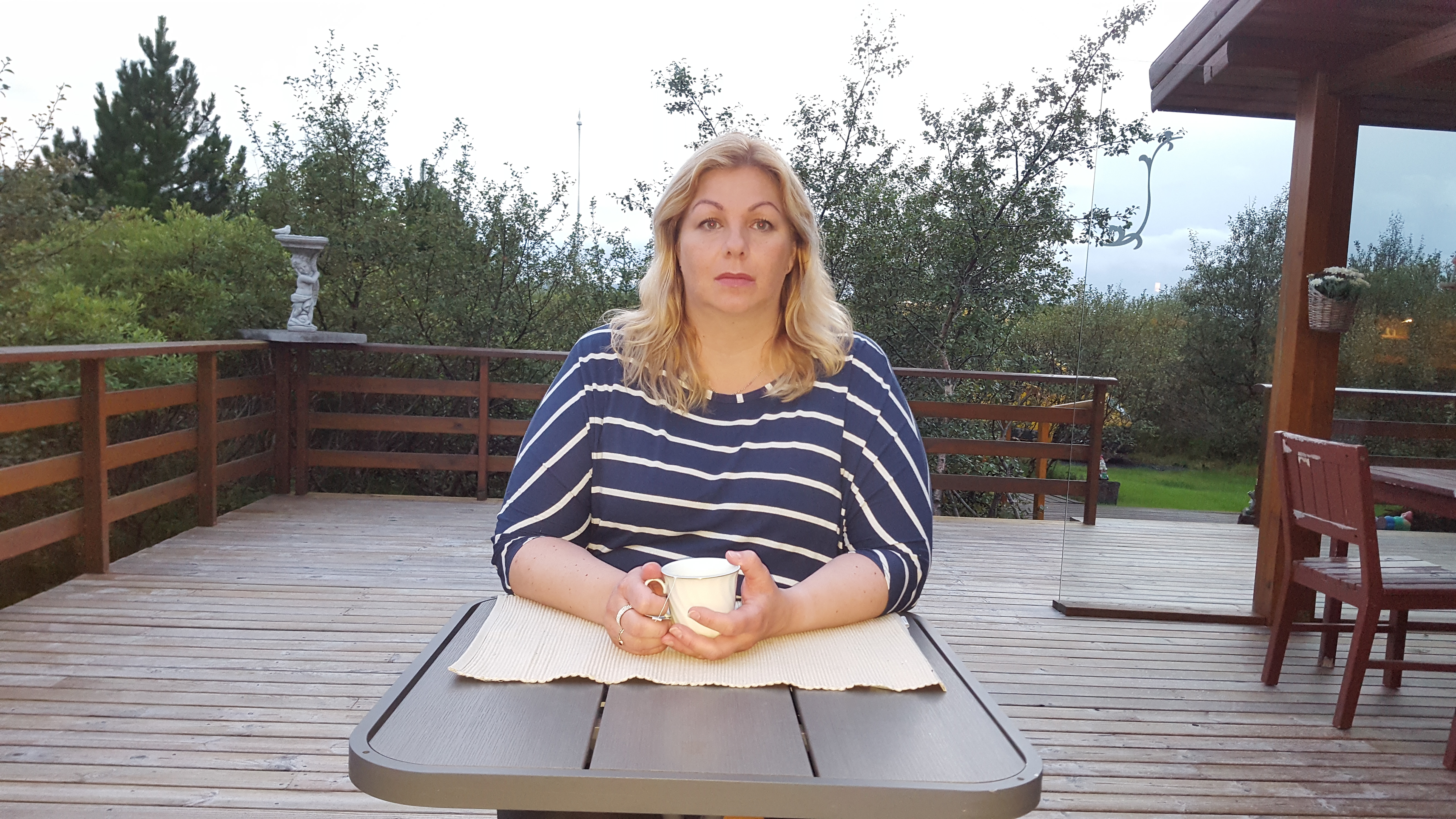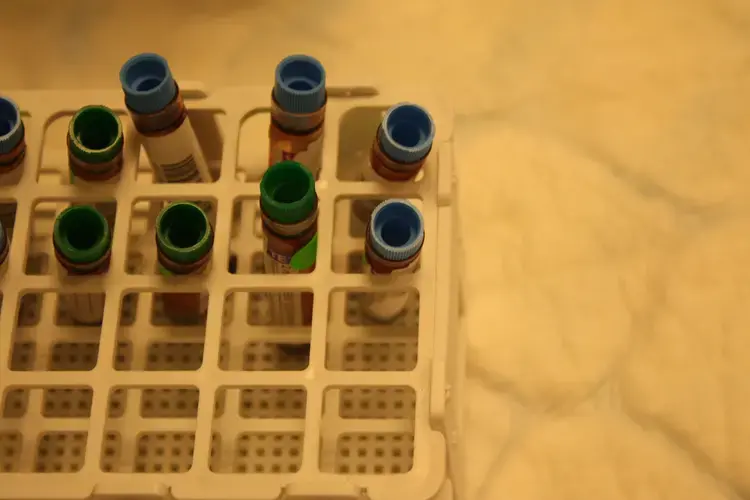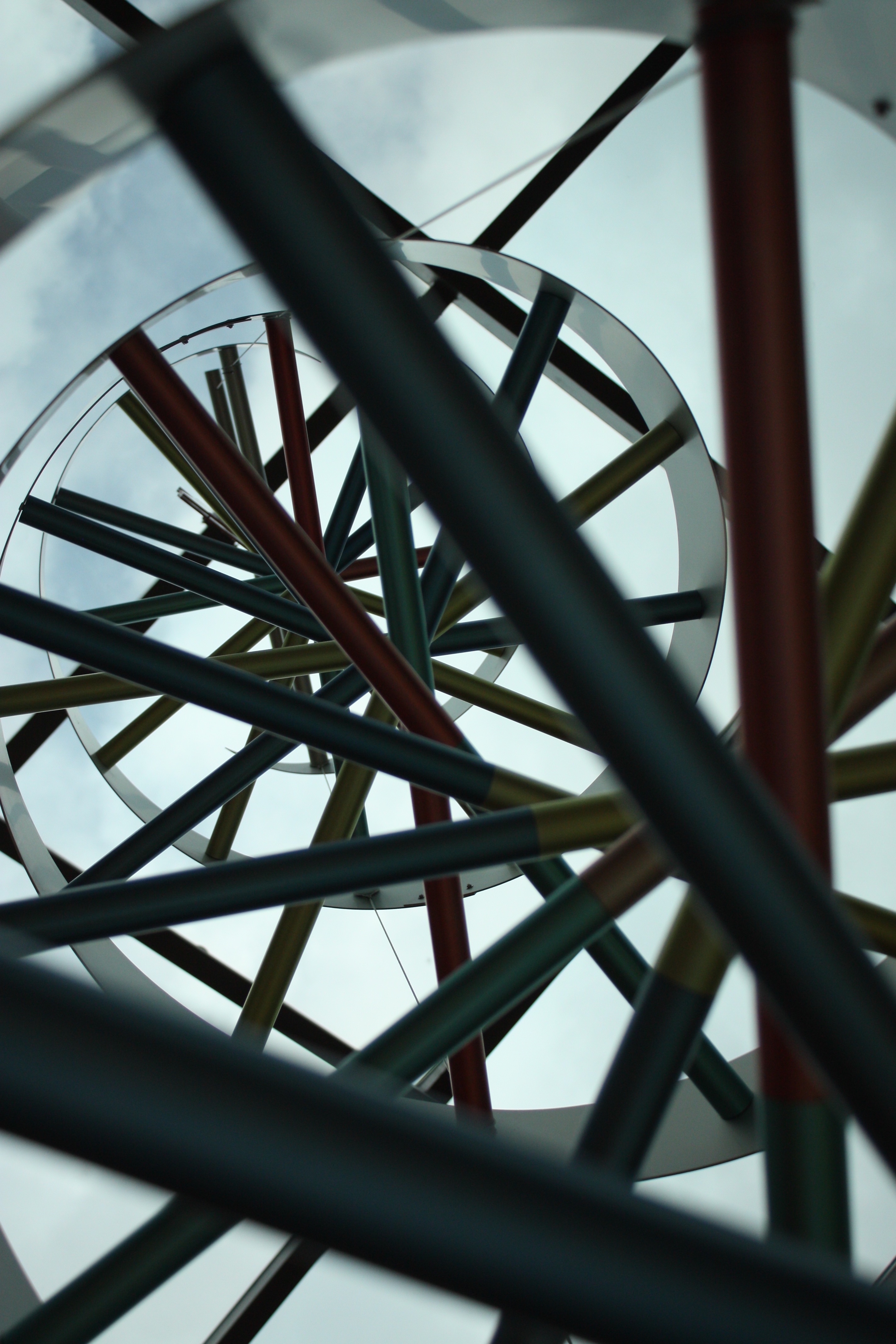
Hrafnhildur Sveinbjörnsdóttir purses her lips. There is a bowl of chocolate raisins in front of her but she doesn’t touch it. Instead she picks up her cup with both hands, sipping the tea slowly, while recounting a night in Iceland’s National University Hospital.
“There I stood,” she says. “With one breast like my mother, and I thought: ‘What have I gotten myself into?’”
It was Christmas Eve 2015. In July that year, Sveinbjörnsdóttir had gotten a double mastectomy in order to save her from breast cancer—maybe. The thing is, Sveinbjörnsdóttir showed no signs of cancer, but seeing her mother die from the disease at the age of 38 had fuelled a lifelong fear that the same would happen to her. When she got diagnosed with the BRCA2 gene mutation in 2014, there was no going back.
“I had already lived longer than my mother had,” the 45-year-old says. “[Surgery] felt inconsequential to me.”
Almost one percent of the Icelandic population is believed to have a BRCA2 gene mutation, which has been linked to a severely increased risk in breast cancer. Carriers are offered earlier and more frequent check-ups—mammograms and MRIs—but for some, those feel less like making sure everything is ok and more like waiting to learn that it isn’t.
That’s why many turn to surgery.
A mastectomy can bring the risk of breast cancer below 5 percent, compared to 10 percent for the average woman. Of course, breasts often play an important sexual and childrearing role, but while many women may have a strong emotional connection to their breasts, they do not serve a specific function necessary to human life.
The choice may seem like an easy one, but removing and rebuilding breasts still has risks. In the process of avoiding illness, some women who might never have gotten sick at all set themselves up for other health problems. Sveinbjörnsdóttir is one of them.
“I originally took a six week leave of absence to get the breasts off,” she says, gesturing towards her chest. “That was two years ago. Sadly, I got laid off.”
In her very first surgery, Sveinbjörnsdóttir’s nipples and areolas were removed; her breast tissue was replaced by tissue expanders. It was a routine operation, but she developed an infection.
“I had to stay in the hospital for three weeks getting intravenous antibiotics,” she says.
“In the second operation, they switched the tissue expanders out for the permanent implants. That also ended with an infection so [in the third operation] they took one of the implants and left the other.”

Sveinbjörnsdóttir sips her tea. Outside her window, the green hills of Esjan, the mountain overlooking Iceland’s capital city of Reykjavik, are covered in gray clouds. During the dark hours of the winter months, the mountain’s outlines can barely be seen from the city. That Christmas Eve, however, in the brightly lit hospital room, the outline of her long-gone mother’s asymmetrical body stared back at Sveinbjörnsdóttir.
“I looked at myself and that’s when I finally felt the shock of it all,” she says.
“It felt like a luxury problem, to have all of this happen but not have cancer. I felt like I wasn’t allowed to have any emotions towards it since I didn’t lose my breast to cancer.”
Sveinbjörnsdóttir’s doctors decided that her body needed a rest from the antibiotics. In April 2016, it became clear that the pocket created for the one remaining implant wasn’t stable enough, so it was removed and the process was started anew.
Sveinbjörnsdóttir had four more surgeries and got infections from all of them except the last one—her nipple reconstruction. The worst is hopefully over. The one thing that remains is the tattoo procedure that will “color in” her new nipples, made with skin that the surgeon grafted from her breasts and shaped like two tiny cinnamon buns before sewing them in place.
“I have spent seven months on antibiotics, aside from the intravenous ones,” Sveinbjörnsdóttir says, counting on her fingers. “I have needed extra anxiety medication, stronger antidepressants, sleeping pills that I had never needed before….”
In the end, she was also prescribed steroids, in case the infections stemming from her body rejected the tissue expanders and later on, the implants. She believes the stress has contributed to her pre-existing fibromyalgia.
The list of things that went wrong in Sveinbjörnsdóttir’s life after deciding to let her breasts go is terrifying. But even with the physical, economic and mental strain she has gone through in the last two years, she stands by her decision. For her, the peace of mind is priceless.
“I have seen how scarred many women become from cancer treatment,” she says. “I always feel like this was worth it.”
And it wasn’t all bad. She went from a double F cup to a C cup, losing 3.8 kg in the process, a literal load off her shoulders.
“I am really happy with my breasts. [My doctor] has done a great job considering that I have had over 300 stitches put in, in that area.”
Incredibly, she is also starting to develop feeling again in her breasts. When asked if they make her feel sexy, her now wide smile stretches into her soft voice as she puts her tea down.
“Totally!”










